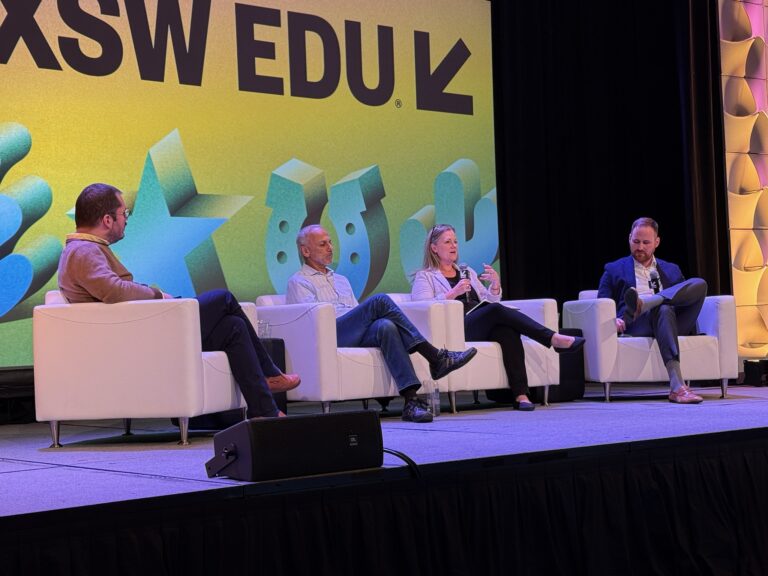Ah yes, it’s that magical time of year again.
For the past seven years, I’ve had a recurring calendar invite that pops up every May with a simple reminder: “Start thinking about SXSW EDU proposals.” Because if there’s one thing I’ve learned—first from submitting dozens of proposals over the years, and now in my second year as a member of the SXSW EDU Advisory Board—it’s that the best proposals don’t happen overnight. They’re crafted with intention, refined through multiple drafts, and submitted with confidence.
I have fond memories of late nights in the W/A office, huddled around laptops with colleagues, workshopping proposal titles, debating session formats, and helping clients tell their stories in exactly 600 characters (including spaces, thank you very much). And then there’s that moment right before you hit submit where you wonder if everyone else in the world will like your ideas as much as you do?
Last year, I had the privilege of moderating a session on AI in education, which reminded me why I love this conference so much—the conversations are real, the issues are urgent, and the community genuinely wants to solve problems together.
What’s New for SXSW EDU 2026
This year brings some exciting changes. In April, Austin officially bid farewell to the Austin Convention Center as it undergoes a complete redesign. The SXSW EDU team is promising to “reinvent spaces for our community and enable new ways to connect,” and honestly, I’m here for it.
But the most significant news? For the first time in SXSW history, Thursday, March 12, will be a true Crossover Day, bringing together the entire SXSW family (EDU, Innovation, Film & TV, and Music) for shared programming.
As someone who has always believed that education intersects with everything, this convergence feels like a natural evolution.
My Four Non-Negotiable Tips
Having submitted and reviewed countless proposals over the years, here’s what matters:
1. Tell a Story, Not a Synopsis.
Your proposal isn’t a course catalog description. It’s a narrative about change, challenge, or discovery. Instead of “This session will cover best practices in…”, try “When our district faced a 40% increase in chronic absenteeism, we discovered that traditional interventions weren’t working. Here’s what we learned when we tried something completely different.” The story hook makes everything else—your speakers, your takeaways, your format choice—more compelling.
2. Don’t Be Promotional (Seriously, it shows).
I’ve seen too many proposals tackle genuinely important topics—student mental health, digital equity, teacher retention—but frame everything through the lens of a specific product or program. When AI became a hot trend, every proposal suddenly became about ‘our AI-powered solution’ instead of the actual learning challenges they were trying to solve. The insights get buried under the pitch, and what could have been a valuable conversation about real challenges becomes a thinly veiled sales presentation.
3. Embrace Healthy Conflict.
The most boring panels are the ones where everyone agrees about everything. Give me speakers who come at the same problem from different angles—the researcher who says data shows X, the practitioner who says “but in my classroom, Y works better,” and the policy expert who explains why Z is actually the constraint we should be addressing. Respectful disagreement creates the kind of dynamic tension that keeps audiences engaged and generates real insights.
4. Stop Defaulting to Panels.
This is my biggest pet peeve. There are seven different session formats, each designed for specific types of content and interaction. That intimate conversation between two experts? That’s not a panel with fewer people—it’s a completely different experience. That hands-on learning experience? That’s a workshop. That networking opportunity for people facing similar challenges? That’s a meetup. Choose the format that serves your content, not the one that feels safest.
The Reality Check
Here’s what I tell everyone submitting proposals: PanelPicker is competitive. But it’s not a lottery. There’s strategy involved, and preparation matters.
The evaluation process combines Advisory Board reviews (40%), public voting (30%), and staff review (30%). This means your proposal needs to work on multiple levels: it must impress advisory board members who have seen everything, engage the broader education community during voting, and align with the overall conference vision.
The Bottom Line
PanelPicker closes on July 27 at 11:59 PM PT. That feels like plenty of time until it isn’t. Start now, iterate often, and don’t be afraid to think big. And if you need me, I’ll be over here, planning my analysis of how venue changes impact where I sit in the Hilton lobby. IYKYK.
Ready to submit? Head to panelpicker.sxsw.com and select “Sign In To Create an EDU Proposal.” See you in Austin in March!




